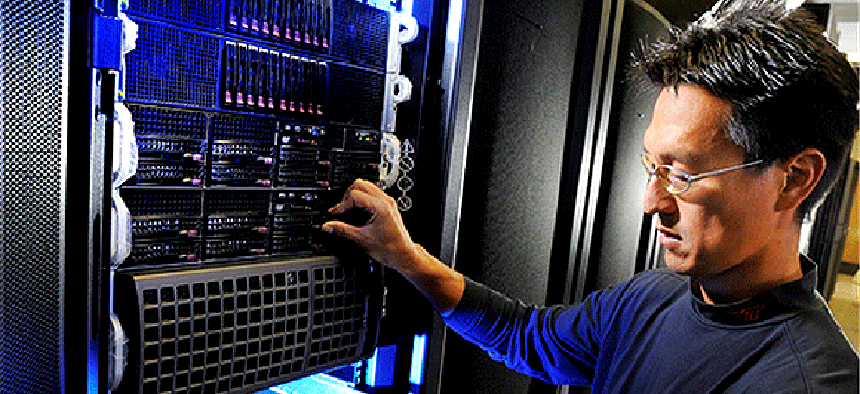Air Force project could 'transform' supercomputing

Virginia Tech team plans multidisciplinary approach to low-power computing in simulating tiny unmanned aircraft.
Recent advances in supercomputing haven’t just been about speed, but in developing more energy-efficient architectures, as the Energy Department has shown with Sequoia at Lawrence Livermore National Laboratory and work on Titan at Oak Ridge National Laboratory.
The Air Force is heading down this path too, recently awarding a contract to Wu Feng, associate professor of computer science in the College of Engineering at Virginia Tech, to speed up simulations of its unmanned micro air vehicles (MAVs). The tiny aircraft, as small as five inches, with insect-sized models expected in the future, can be used in a variety of military and hazardous conditions.
Feng, a proponent of green supercomputing, plans to carry out the project with an approach to multi- and many-core parallel computing that he said will “transform supercomputing,” according to a Virginia Tech announcement.
The Air Force project will make use of accelerator-based supercomputers such as HokieSpeed, which Feng designed and built in 2011 for a mere (in supercomputing terms) $1.4 million National Science Foundation grant.
Virginia Tech's Wu Feng on HokieSpeed via Vimeo
The approach to MAV simulations — conducted under a contract with a maximum of $6 million over five years — is a multidisciplinary effort, involving aerospace and mechanical engineers, mathematicians and computer scientists from Virginia Tech and North Carolina State University, who by combining advances in math, algorithms and engineering will develop computational fluid dynamic codes and supporting hardware and software, Virginia Tech said.
Researchers expect to “achieve substantial speed-up over current simulations and provide significantly better utilization of the underlying and co-designed hardware-software of a supercomputer,” Feng said.
Improving performance through parallel hardware and co-designed software is an emerging field, he said. “Furthermore, coupling hardware-software co-design with advances in algorithmic innovation offers the promise of multiplicative speed-ups,” he said.
As supercomputing has gotten steadily more powerful, the amount of energy the machines draw has become a concern. That’s one reason Feng and Kirk Cameron of the Virginia Tech College of Engineering started the Green500, which ranks supercomputers, in essence, according to how much mileage they get out of the power they use.
Feng’s work on efficient computing dates to when he worked at Los Alamos National Laboratory, where he built a 240-node cluster called Green Destiny (named after the sword in the movie “Crouching Tiger, Hidden Dragon”) that performed at 100 gigaflops while using the same power as two hair dryers, about 3.2 kilowatts, Virginia Tech said.
And energy-efficient supercomputers on a large scale are catching on. Titan, if fact, which leads the Top500.org list of the world’s fastest supercomputers, is at No. 3 of the Green500’s list of most efficient.
NEXT STORY: 5 steps to a secure, multitenant private cloud





